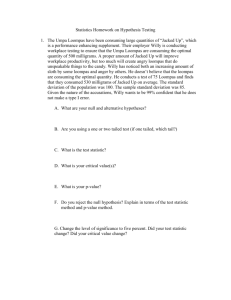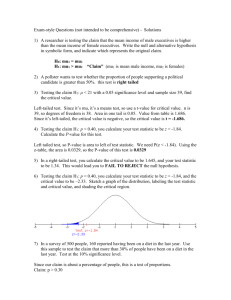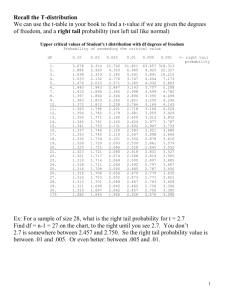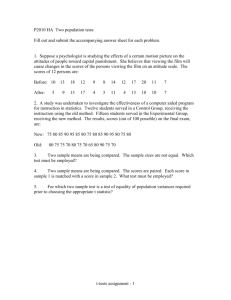P-Values – Denoted p, this is the smallest significance level at which
advertisement
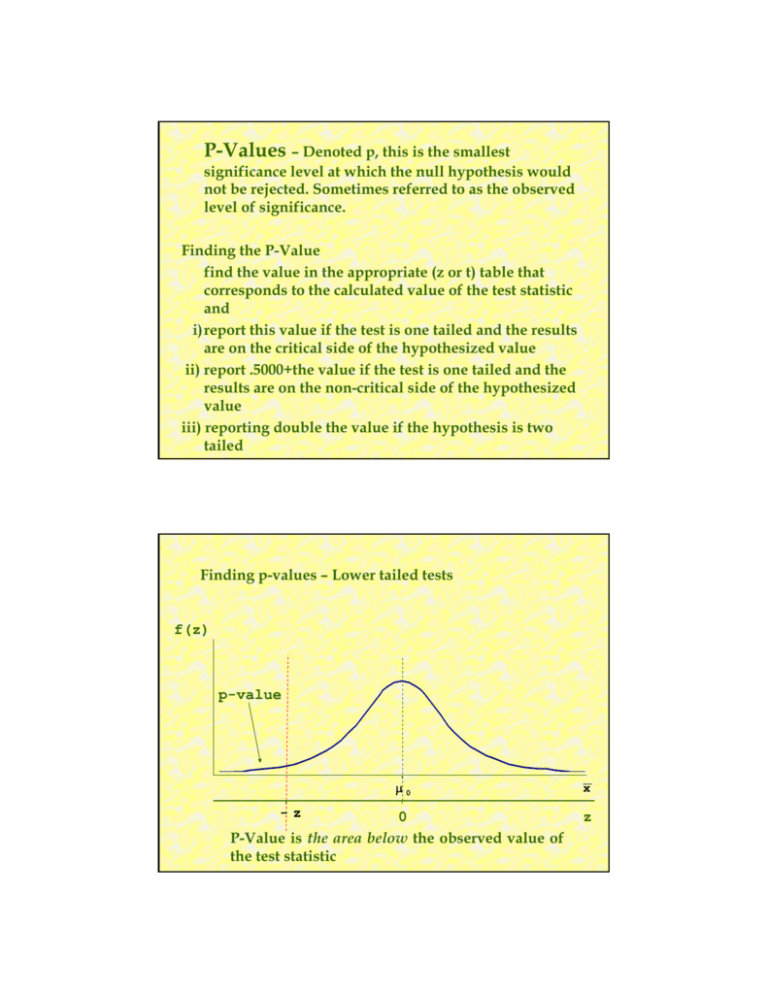
P-Values – Denoted p, this is the smallest significance level at which the null hypothesis would not be rejected. Sometimes referred to as the observed level of significance. Finding the P-Value find the value in the appropriate (z or t) table that corresponds to the calculated value of the test statistic and i)report this value if the test is one tailed and the results are on the critical side of the hypothesized value ii) report .5000+the value if the test is one tailed and the results are on the non-critical side of the hypothesized value iii) reporting double the value if the hypothesis is two tailed Finding p-values – Lower tailed tests f(z) p-value µ0 -z 0 P-Value is the area below the observed value of the test statistic x z Finding p-values – Upper tailed tests f(z) p-value µ0 x +z 0 P-Value is the area above the observed value of the test statistic z Finding p-values – Two tailed tests f(z) 1 2 p-value µ0 +z 0 P-Value is two times the area more extreme than the observed value of the test statistic x z Finding p-values – Two tailed tests f(z) 1 2 p-value µ0 x -z 0 z P-Value is two times the area more extreme than the observed value of the test statistic How do you use p-values? if the p value is less than the significance level α, we reject the null hypothesis Why are p-values preferred? a. they allow anyone to select their own significance level α b. they provide a measure of the strength of the evidence the sample data provides against the null hypothesis (smaller p-value – stronger evidence against H0) c. they are usually reported by computer packages Most software give two tailed p-values for the null hypothesis that the parameter being tested is equal to zero – what do you do when you want to test a one-tailed null hypothesis (i.e., that the parameter being tested is no more than zero or is no less than zero)? If the sample value of the test statistic is in the same tail as the reject region, i.e. • the sample value of the test statistic exceeds the hypothesized value in an upper tailed test or • the sample value of the test statistic is less than the hypothesized value in a lower tailed test the p value is half the p-value reported by the software If the sample value of the test statistic is in the opposite tail of the reject region, i.e. • the sample value of the test statistic exceeds the hypothesized value in a lower tailed test or • the sample value of the test statistic is less than the hypothesized value in an upper tailed test the p value is 1 – (half the p-value reported by the software)



